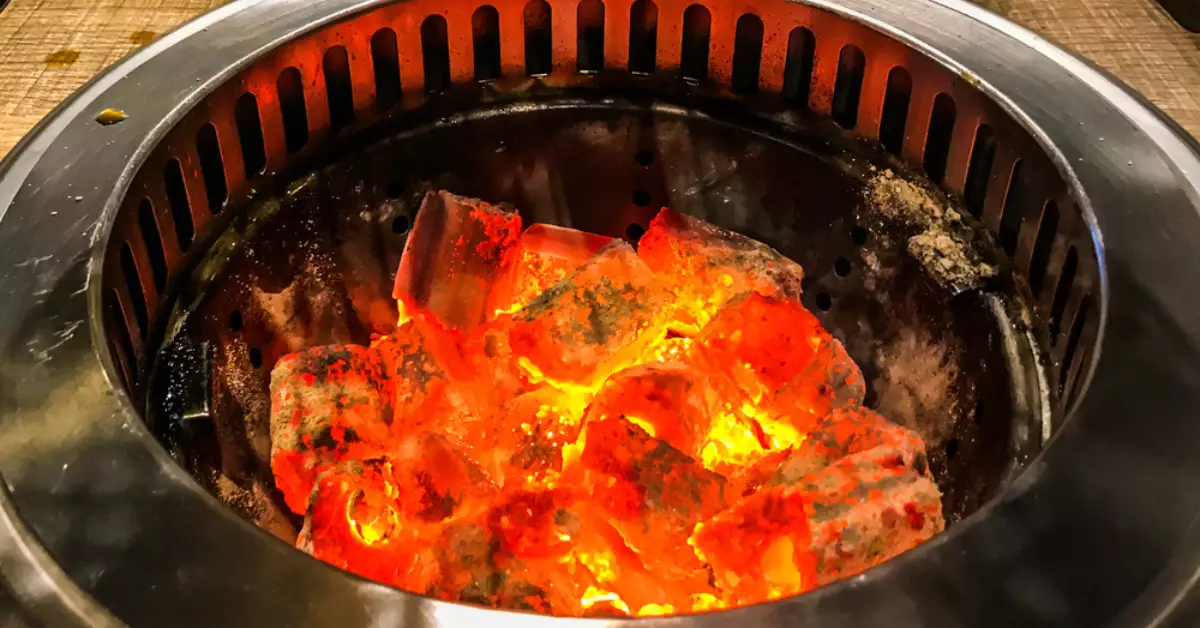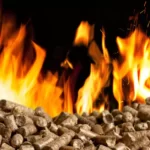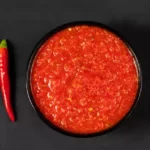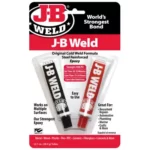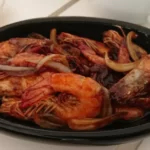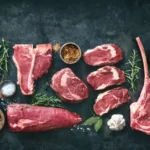Lump charcoal, as many BBQ aficionados will tell you, is a vital ingredient for achieving that quintessential smoky flavor in grilled foods. Made by burning hardwood in low oxygen conditions, this type of charcoal has become a go-to option for those seeking to elevate their grilling experience. Its natural, additive-free composition lends a distinctive character to the food, often sparking heated debates on whether lump charcoal genuinely adds a smoke flavor to the fare.
To answer this question, we first need to break down what lump charcoal is and how it influences the taste of the food. Lump charcoal, with its irregular shapes and sizes, is essentially charred wood. This form of charcoal doesn’t have the uniform appearance of briquettes, but it does offer a higher heat level and less ash residue.
However, the real crux of the matter lies in how lump charcoal interacts with the food on the grill. Its ability to add a smoke flavor is intricately tied to the type of wood used in its creation and the cooking techniques applied.
Lump Charcoal Versus Other Types
Comparison with Briquettes
Briquettes and lump charcoal differ significantly in terms of composition and flavor impact. Briquettes are uniform, often pillow-shaped charcoal pieces made from compressed charcoal dust and binders. They offer a consistent heat but may impart a slightly chemical taste due to the additives used.
On the other hand, lump charcoal, composed of pure wood, delivers a more authentic, natural flavor. However, its heat consistency can be tricky to master, and its burn time is shorter compared to briquettes.
Comparison with Gas Grills
Gas grills provide convenience and control but don’t add any distinct flavor to the food. The absence of combustion materials like wood or charcoal results in a neutral flavor profile. Lump charcoal, conversely, can contribute a subtle, smoky, and earthy note, enhancing the overall taste and aroma of grilled dishes.
Flavor Profile of Lump Charcoal
Understanding the flavor profile of lump charcoal requires a closer look at the attributes that set it apart. These attributes can be broken down into a few crucial factors:
Lump Charcoal’s Effect on Flavor
Lump charcoal, due to its natural composition, impacts the flavor profile of grilled foods in a subtle yet distinct manner. Unlike other types of charcoal, especially briquettes, lump charcoal contains no binding agents or additives that could potentially alter the taste of the food.
When lump charcoal burns, it generates a clean heat source that, in comparison to briquettes or gas grills, is thought to produce a more desirable taste. The food grilling over this heat source gets gently kissed with a smoky, wood-fired flavor that many barbecue enthusiasts find pleasing.
Heat and Burn Rate Influences Flavor
The way lump charcoal burns – the heat it emits and its burn rate – plays a critical role in determining the flavor it imparts to food. Lump charcoal burns hotter than its counterparts, leading to a quicker sear and locking in the juices of the food.
However, the burn rate of lump charcoal is inconsistent. It tends to burn unevenly due to its irregularly shaped pieces, with smaller pieces burning out faster than larger ones. This uneven burn rate can create hot and cold spots on the grill, which might require frequent adjustments and could impact the overall cooking process.
Factors Influencing Lump Charcoal’s Taste
Lump charcoal’s flavor can vary widely due to several key factors:
- Wood Type: The type of hardwood used to produce lump charcoal is a significant flavor influencer. Each hardwood has its unique flavor profile. For instance, hickory imparts a strong, hearty flavor, whereas applewood gives a mild, sweet taste.
- Production Process: The production process of lump charcoal, which includes the type of kiln used and how long the wood is burned, can also affect flavor.
- Cooking Technique: Cooking techniques can greatly influence how much of the charcoal flavor is transferred to the food. For example, using indirect grilling techniques or cooking food for longer periods allows it to absorb more of the smoky flavor.
- Grill Ventilation: Proper ventilation is key to managing the intensity of the smoke flavor. More ventilation means a cleaner, less smoky taste, while reduced ventilation can intensify the smokiness.
Does Lump Charcoal Add Smoke Flavor?
This is a point of contention among grill enthusiasts. Let’s dive into the discussion and separate the facts from myths:
Unpacking the Smoke Flavor Myth
The commonly held belief that lump charcoal imparts a strong smoke flavor is not entirely accurate. Lump charcoal indeed adds a unique, woody note to the food. However, it’s more of a light, subtle hint of smoke rather than the strong, smoky flavor typically associated with barbecued food.
In fact, much of the intense smoke flavor that’s often linked with barbecuing comes from the actual smoke wood – such as chips or chunks of hickory, mesquite, applewood, or cherry – that’s added to the fire, rather than from the charcoal itself.
The Role of Wood Type in Smoke Flavor
While it’s true that the type of wood used in the production of lump charcoal can subtly influence the smoke flavor, the impact is not as profound as when using smoking woods. Each type of wood, whether it’s hickory, oak, or apple, has its distinct flavor characteristics when used as smoking wood.
The same types of wood, when used to produce lump charcoal, still retain some of their unique flavor characteristics, but the flavors become much more subtle and nuanced. In other words, while you can expect a hint of the wood’s flavor to come through with lump charcoal, it’s not going to be as potent as using the wood for smoking.
The Role of Moisture in Lump Charcoal
Unlike briquettes, lump charcoal retains some of the natural moisture from the wood. This moisture can create steam during the grilling process, which can also subtly influence the flavor of the food. The steam can help keep the food moist and tender, which might also contribute to the overall perception of improved taste when using lump charcoal.
Tips for Maximizing Lump Charcoal Flavor
Choosing the Right Lump Charcoal
Selecting the best lump charcoal is the first step in optimizing the flavor of your grilled foods:
- Look for brands that specify the type of wood used. This allows you to match the subtle flavor profile of the lump charcoal to the type of food you’re cooking.
- Choose lump charcoal that consists of bigger chunks. Larger pieces burn longer and provide a more consistent heat.
- Avoid lump charcoal that contains a lot of dust and small pieces. They burn out quickly, causing temperature fluctuations and affecting the cooking process and flavor outcome.
Proper Grilling Techniques
Effective grilling techniques can greatly enhance the flavor imparted by lump charcoal:
- Indirect Grilling: Cooking food indirectly, or off to the side of the heat source, allows it to cook more slowly and absorb more smoke flavor.
- Managing Ventilation: Ventilation controls the amount of oxygen reaching the charcoal. More oxygen increases the heat and reduces the smoky flavor, while less oxygen cools the fire and increases smoke production.
- Layering Flavors: Add smoking wood to the lump charcoal to layer flavors. The combination of different smoke flavors can create a unique taste experience.
- Searing: Use the high heat of lump charcoal to sear your food quickly, locking in the juices and creating a delicious crust.
Myths and Misconceptions About Lump Charcoal
Common Misunderstandings
Many people assume that lump charcoal will deliver a heavy smoke flavor, akin to using wood chips or chunks. However, while lump charcoal can impart a subtle smoky note, it doesn’t provide the intense smokiness often associated with BBQ dishes.
Separating Fact from Fiction
Understanding lump charcoal’s actual role in flavor enhancement is essential. It offers a natural, authentic base that subtly influences the food’s taste. To achieve a deeper smoke flavor, consider incorporating smoking woods or using specific grilling techniques.
Advantages and Disadvantages of Lump Charcoal
Benefits of Using Lump Charcoal
Lump charcoal has several benefits: it burns hotter, produces less ash, and contains no additives, ensuring a natural flavor. It’s also more responsive to oxygen, allowing better temperature control with adjustable grill vents.
Potential Drawbacks and How to Overcome Them
Despite its advantages, lump charcoal has its drawbacks. It’s more expensive than briquettes, its burn time is shorter, and it can be challenging to maintain consistent temperature. Overcoming these hurdles requires practice, proper heat management, and selecting quality lump charcoal.
Frequently Asked Questions
Does lump charcoal make food taste better?
While taste is subjective, many people believe lump charcoal gives food a more authentic and subtly smoky flavor compared to briquettes or gas grills. However, the type of lump charcoal used and cooking techniques applied greatly affect the flavor outcome.
How can I maximize the flavor imparted by lump charcoal?
Choosing quality lump charcoal, controlling grill temperature effectively, and using slow cooking methods can help maximize the flavor. Additionally, adding smoking woods can intensify the smoky note.
Why is lump charcoal more expensive?
Lump charcoal is more expensive due to its production process. It’s made from hardwood material, requires a specific burning process, and doesn’t include fillers or binders. Its ability to burn hotter and cleaner than briquettes also adds to its higher cost.
Conclusion
The influence of lump charcoal on smoke flavor is not as pronounced as often assumed. While it does impart a certain smoky note, the effect is subtle and greatly influenced by the type of wood used, the grilling technique, and the addition of smoking woods.
In this light, lump charcoal serves as a valuable tool in the griller’s arsenal. Its natural, additive-free composition and the nuanced flavor it contributes make it a preferred choice for many, despite the need for careful heat management and the slightly higher cost.
As the debate on lump charcoal’s flavor impact continues, one thing remains clear – it brings a unique character to the grilled food. Its contribution may not be as intense as that of smoking woods, but it provides a flavor base that enhances the overall grilling experience, making every bite an exploration of taste and tradition.

